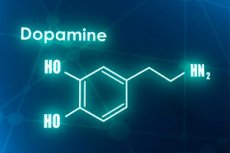New publications
Dopamine treatment reduces symptoms of Alzheimer's disease
Last reviewed: 02.07.2025

All iLive content is medically reviewed or fact checked to ensure as much factual accuracy as possible.
We have strict sourcing guidelines and only link to reputable media sites, academic research institutions and, whenever possible, medically peer reviewed studies. Note that the numbers in parentheses ([1], [2], etc.) are clickable links to these studies.
If you feel that any of our content is inaccurate, out-of-date, or otherwise questionable, please select it and press Ctrl + Enter.

A new way to combat Alzheimer's disease has been discovered by Takaomi Saido and his team at the RIKEN Brain Center (CBS) in Japan. Using a mouse model, the researchers found that dopamine treatment can alleviate physical symptoms in the brain and also improve memory.
The study, published in the journal Science Signaling, looks at the role of dopamine in stimulating the production of neprilysin, an enzyme that can break down harmful plaques in the brain that are a hallmark of Alzheimer's disease. If similar results are found in human clinical trials, it could lead to a new way to treat the disease.
The formation of hardened plaques around neurons is one of the earliest signs of Alzheimer's disease, often beginning decades before behavioral symptoms such as memory loss appear. These plaques are formed from pieces of the peptide beta-amyloid that accumulate over time.
In the new study, Saido's team at RIKEN CBS is focusing on the enzyme neprilysin because previous experiments have shown that a genetic manipulation that increases neprilysin production in the brain—a process called boosting—leads to fewer beta-amyloid plaques and improved memory in mice.
While genetically manipulating mice to produce neprilysin is useful in experimental settings, to treat humans, a way to do this with drugs must be found. Neprilysin pills or injections are not acceptable because the enzyme cannot enter the brain from the bloodstream.
The first step in the new study was to carefully screen a variety of molecules to determine which ones could naturally increase neprilysin levels in the right parts of the brain. The team’s previous research had narrowed the search to hormones produced by the hypothalamus, and they found that applying dopamine to brain cells cultured in a dish led to increased neprilysin levels and decreased free beta-amyloid levels.
Using the DREADD system, they inserted small designer receptors into dopamine-producing neurons in the ventral tegmental area of the mouse brain. By adding the appropriate designer drug to the mice's food, the researchers were able to consistently activate these neurons, and only these neurons, in the mice's brains.
As in the dish, the activation led to increased levels of neprilysin and decreased levels of free beta-amyloid, but only in the front of the mice’s brains. But could the therapy clear up the plaques? Yes.
The researchers repeated the experiment using a special mouse model of Alzheimer's disease in which the mice develop beta-amyloid plaques. Eight weeks of chronic treatment resulted in a significant reduction in the number of plaques in the prefrontal cortex of these mice.
The DREADD system is a system for precisely manipulating specific neurons. But it's not very useful in clinical settings for humans.
The final experiments tested the effects of L-DOPA treatment. L-DOPA is a dopamine precursor molecule often used to treat Parkinson's disease because it can enter the brain from the blood, where it is then converted to dopamine.
Treatment of model mice with L-DOPA resulted in increased levels of neprilysin and decreased amounts of beta-amyloid plaques in both the front and back of the brain. Model mice treated with L-DOPA for three months also performed better on memory tests than untreated model mice.
Tests have shown that neprilysin levels naturally decline with age in normal mice, particularly in the front of the brain, possibly making it a good biomarker for preclinical diagnosis of Alzheimer’s disease or for diagnosing individuals at increased risk. How dopamine causes neprilysin levels to increase remains unknown and is the next topic of study for Saido’s group.
"We showed that L-DOPA treatment can help reduce harmful beta-amyloid plaques and improve memory function in Alzheimer's disease mouse models," explains Watamura Naoto, first author of the study.
"However, L-DOPA treatment is known to have serious side effects in patients with Parkinson's disease. So our next step is to investigate how dopamine regulates neprilysin in the brain, which should lead to the development of a new preventive approach that could be started at the preclinical stage of Alzheimer's disease."
